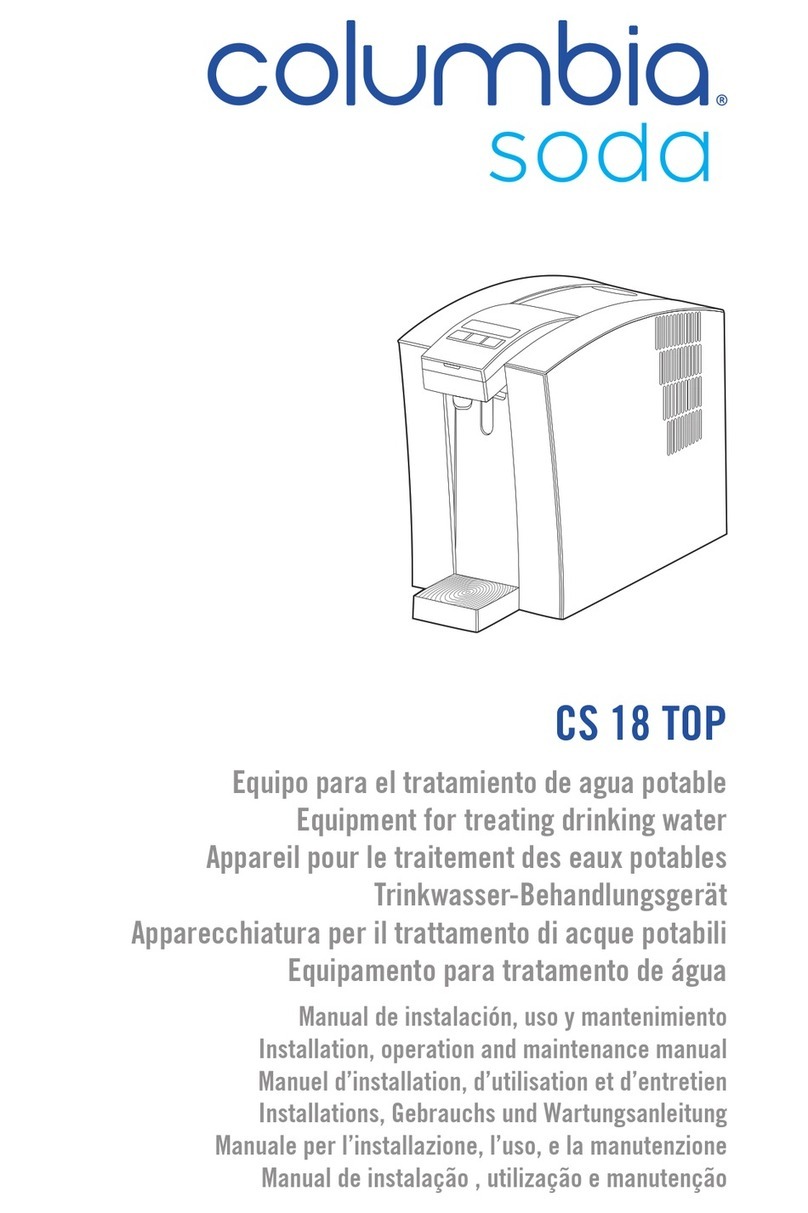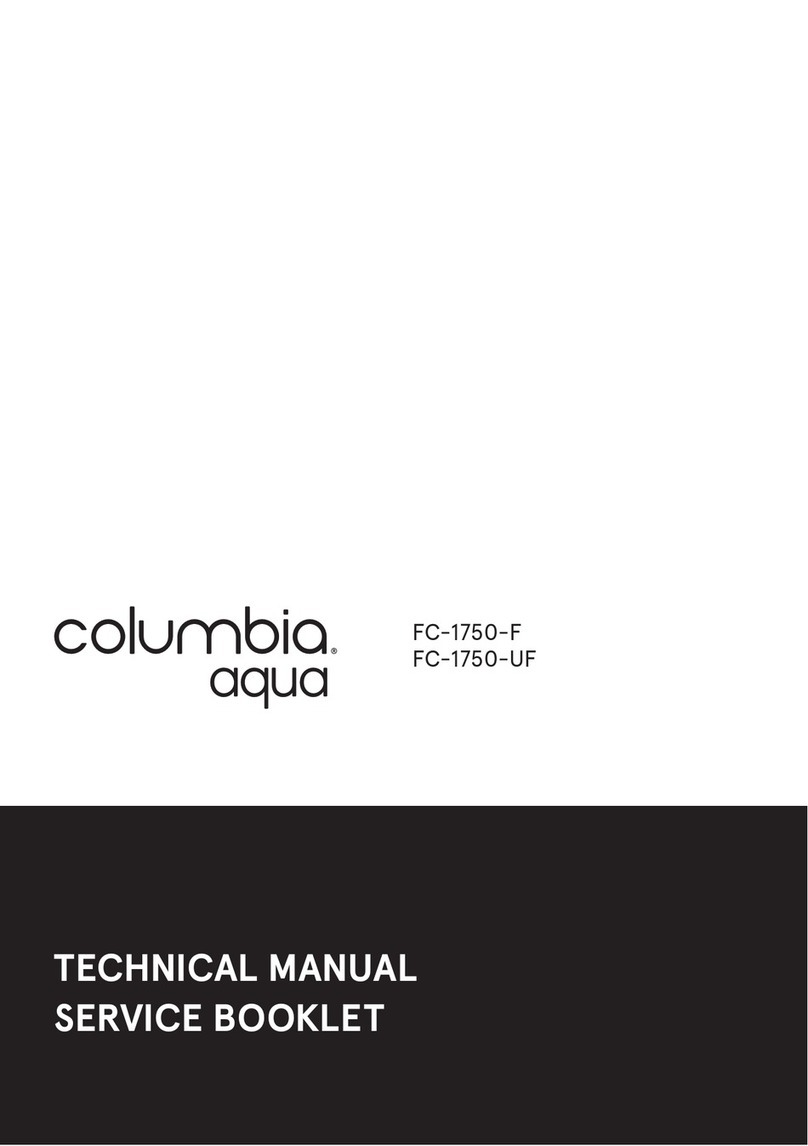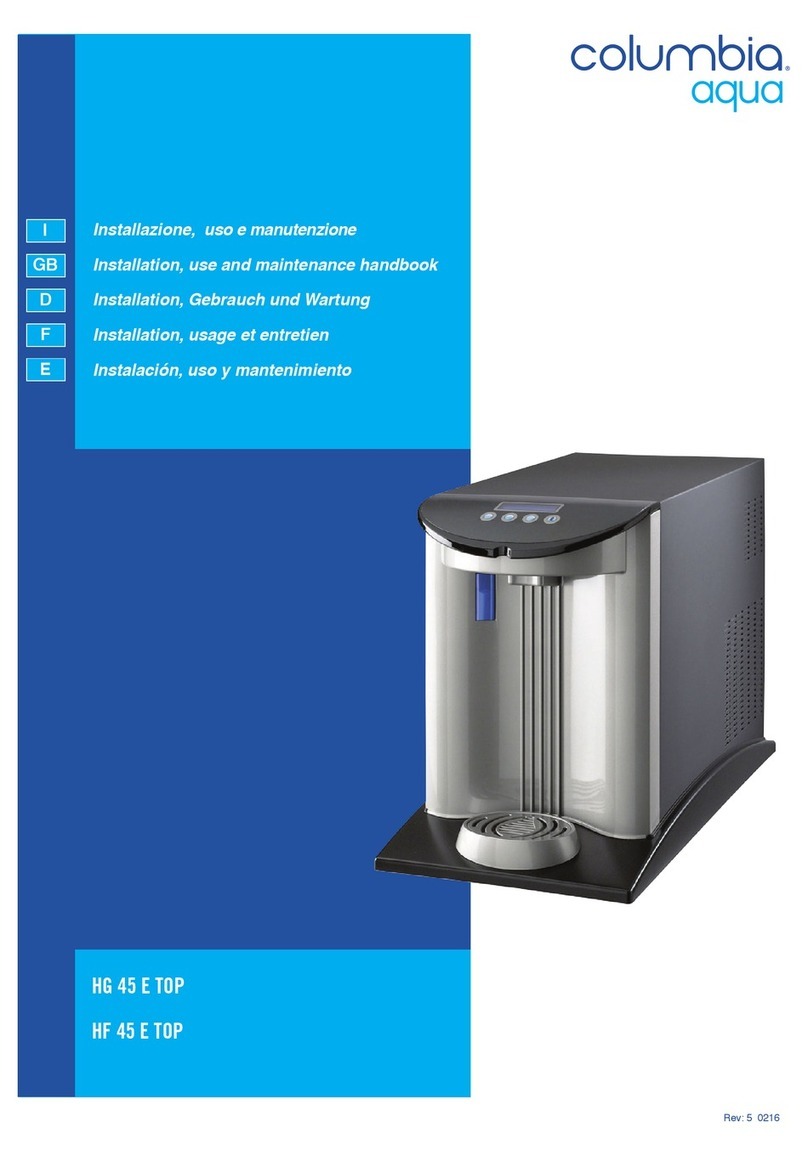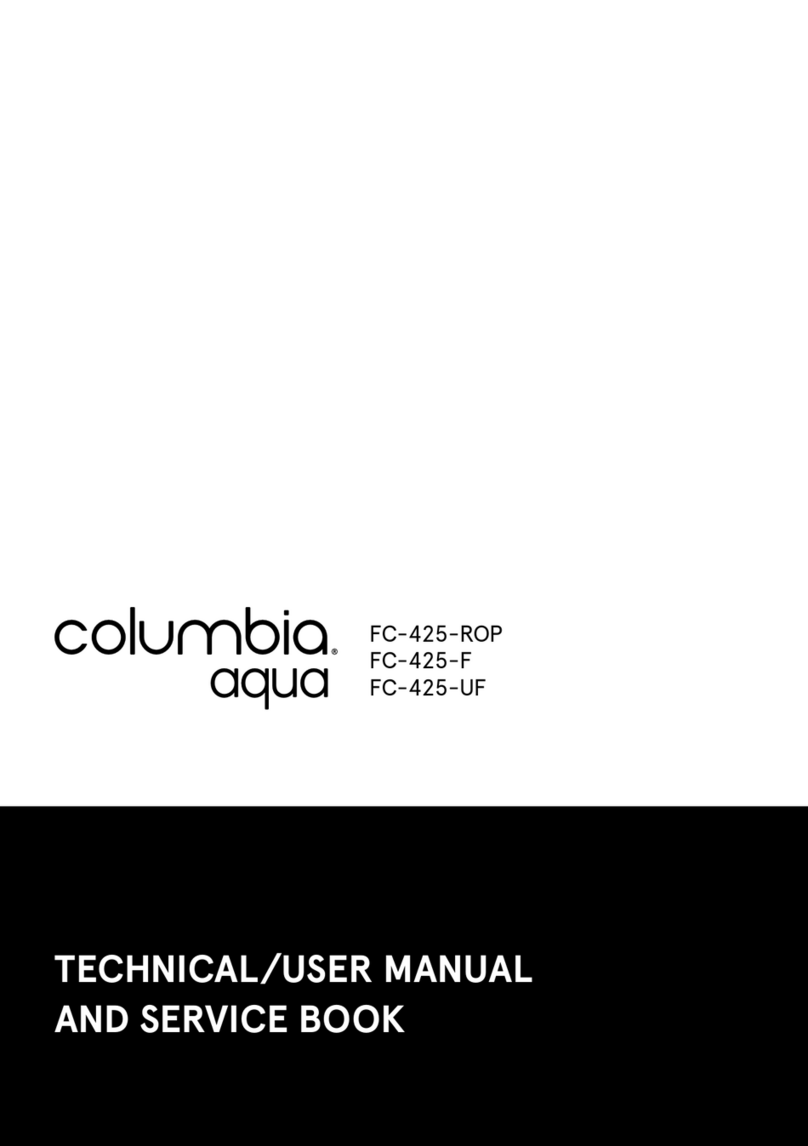
Data sheet
5. EQUIPMENT OPERATION
5.1 How to draw water from your dispenser
See chapter 3 of the Technical Manual to identify the
dispensers and how to draw water.
5.2 Use of management and control components
See chapter 4 of the Technical Manual to identify and
know how the management and control components
work.
5.3 Basic system operation
In the “Filtration” models, the mains water to be trea-
ted enters the equipment through the turbidity filter
and carbon filter. In this filtration stage, suspended
particles, chlorine, its derivatives and other organic
substances are retained.
In the “Ultrafiltration” models, the water subsequently
passes through the UF membrane where the smallest
particles and even viruses and bacteria will be retained.
In the “Reverse Osmosis” models; The passage of water
into the equipment is controlled by a solenoid valve.
The water, after the filtration stage, is driven towards
the reverse osmosis membrane. Depending on the mo-
del, the equipment may incorporate a pump to increase
the pressure. The pressure of the water on the mem-
brane makes the reverse osmosis process possible.
Subsequently, the water passes through a post-filter
whose purpose is the elimination of possible odors and
salt.
The rejected water or with excess salts and other dis-
solved substances is directed towards the drain for its
elimination.
When demanding water by pressing the front dispensers
of the equipment, the water accumulated in the cold,
hot and reserve water tanks (depending on the model)
flows towards the outlet nozzles.
Attention: There are slight variations in opera-
tion, depending on the model. Read the corres-
ponding section of the Technical Manual.
6. INSTALLATION
The installation of your dispenser must be carried out
by personnel qualified enough for it. Check with the
dealer if in doubt.
Attention: Since the device to be installed impro-
ves the quality of the water that is going to be
consumed, all the tools that are going to be used
for assembly and installation must be clean and in no
case may they be contaminated or impregnated with
grease. oils or oxides. Use exclusive use tools for tube
cutting, membrane manipulation, etc.
Attention: The work must be carried out with an
attitude and adequate hygienic conditions, ta-
king extreme precautions in everything related to ma-
terials and components that are going to be in contact
- Prolonged hyperchlorination over time.
- Sludge or turbidity greater than 3 NTU.
- A concentration of nitrates greater than 100 ppm.
- A sulfate concentration greater than 250 ppm.
- Contact your distributor to recommend the most
suitable pre-treatment for your case, and thus ensure
the proper functioning of the equipment, avoid damage
to components and guarantee the quality of the water
supplied.
4.2 Prior warnings to installation
• In case of having to condition the installation of the
home or business to be able to install the equipment
in the planned place, it must be done following the na-
tional regulations for interior installations of water and
electrical supplies.
• COLUMBIA equipment requires an electrical outlet
less than 1 meter away.
• COLUMBIA equipment should not be installed lying
down or tilted. They must be placed on a flat surface
for correct and safe operation.
• The place planned for its installation must have enou-
gh space for the device itself, its accessories, connec-
tions and for carrying out convenient maintenance.
• Maintain a minimum separation of 10 cm on the sides
and rear wall to ensure proper ventilation of the equi-
pment.
• Under no circumstances will the equipment be insta-
lled outdoors.
Attention: This equipment nust be connected to
the electrical current directly, it must be left to
rest for 2 hours once it has been placed in the
desired installation position. This is very important to
ensure correct system operation, otherwise the com-
pressor could be damaged. The manufacturer will not
be responsible for damages caused to the equipment
in this case.
4.3. Equipment use warnings
• When you are going to be away for more than a week,
close the water inlet tap to the equipment, empty it and
disconnect it from the power supply. When you return,
connect the power supply to it, open the input key and
empty the storage tank twice before consuming water.
Attention: After a prolonged period (more than
a month) in which the equipment has not been
working or producing water, contact your distributor
in order to carry out adequate sanitization and main-
tenance.
Attention: Special attention should be paid to
the cleaning and hygiene of the front dispensers,
on a regular basis and especially when carrying
out periodic maintenance and sanitization. To do this,
use the sanitizing spray and single-use absorbent paper
(See the Sanitization chapter).
Attention: The water provided by the osmosis
equipment is LOW MINERALIZATION. The mine-
ral salts that the human body needs are provided
mainly by food, and to a lesser extent by drinking water.

































